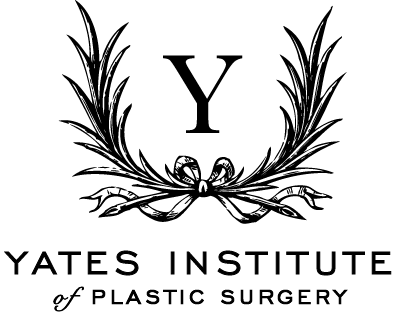5 Things You Need To Know Before Getting Lip Fillers
Lip augmentation with fillers has indeed become, in recent years, the most popular cosmetic procedure, appealing to representatives of both sexes, dissatisfied with the way the genetics endowed them. Also, this procedure is used by people who want to restore youth and expressiveness of an essential component in the physiognomy of the face, lips.
Lip augmentation with fillers is a non-surgical procedure performed in an environment controlled by an esthetician who has years of training in this regard. The consultation before the intervention is perhaps as important as the intervention itself. The esthetician will be interested in all the details and will answer all the questions to ensure that the patient's desired needs are met.
Here are some things you need to know before using lip fillers:
What are the fillers used in lip augmentation?
Young skin is rich in hyaluronic acid, a substance that binds water in the body, thus creating volume, moisturizing the skin, and ensuring a soft and full face. As we age, hyaluronic acid has a weaker effect, resulting in loss of volume and elasticity. Hyaluronic acid is widely used in medicine, and tens of millions of people have benefited from such treatments. When injected, hyaluronic acid is absorbed by the body and will be eliminated over time, so the results last from 3 to 6 months in more mobile face areas such as the lips.
There are several variants of lip fillers. The main differences between them is associated with the persistence of the results obtained after the injection and the feeling the fillers cause in the lips. There are certain fillers with hyaluronic acid that help create a more refined and hydrated appearance of the lips. Using others results in a larger volume of the lips, helping to repair contours that have lost their shape, asymmetries, and appearance, like flat lips.
Is lip augmentation painful?
The lips are sensitive and well-vascularized, and for this reason, the augmentation intervention is slightly painful, but the esthetician will make sure that he offers you all the comfort. He will initially apply anesthetic cream with a robust cushioning effect on the area. If you feel pain, he will continue with intraoral anesthesia (as in the one used in dentistry). Most patients consider the procedure bearable (especially since it takes a maximum of 5 minutes) and prefer anesthesia with cream.
To increase comfort during the procedure and after the intervention when inflammation occurs, the esthetician can use a cannula that reduces the risk of bruising and associated edema. The cannula is a blunt-tipped needle, so it does not sting or traumatize blood vessels and nerve endings in the lips but "bypasses" them. For this reason, the procedure does not cause considerable discomfort.
The choice of the anesthesia technique and the injection with a needle or cannula is established after consultation with the physician.
Although mild, side effects do exist
Hyaluronic acid is the most widely used filler and helps maintain skin hydration, thus improving the appearance of the lips. Redness (erythema), swelling (edema), or bruising (bruising) after surgery is the most common reactions after injection, but their duration is short a few hours or days. The use of the atraumatic cannula has considerably reduced the risk of hematomas, especially on the lips.
Migration is more common in the lips due to an incorrect injection technique or too much substance introduced in a single session. The skin is elastic and relaxes under the pressure of hyaluronic acid, but when its ability to stretch is exceeded, the acid can migrate beyond, for example, the contour of the lips or leaving asymmetries visible. Granulomas are small agglomerations of hyaluronic acid that may appear shortly after injection and provide an uneven appearance of the lips.
Necrosis is the most unpleasant side effect because it can permanently leave unsightly marks on the affected area and compromise tissue function. The cause is related to the intravascular injection of the filler and stopping the blood supply to the tissue or the injection of too much hyaluronic acid to cause arterial compression. With the right esthetician, this side effect is scarce.
Infections can be easily avoided by following the rules of hygiene, asepsis, and antisepsis in any modern medical office. Also, all materials used for hyaluronic acid injection are disposable. If the inflammatory signs persist for more than seven days at the injection site, it is best to consult your doctor.
As for allergic reactions to hyaluronic acid, they are sporadic. Most allergic reactions are related to the anesthetic cream or anesthetic substance in the composition of the syringe (usually, premium brands of hyaluronic acid also add anesthesia to the needle to increase patient comfort during the injection).
Undoing the results of lip fillers
"I've had lip filling in the past, and the result was not satisfactory. Can I undo something?” The simple answer is yes.
Hyaluronidase is an enzyme that facilitates the hydrolysis or degradation of hyaluronic acid. Introduced into the tissue, it dissolves the synthetic hyaluronic acid introduced by injection and will not affect our hyaluronic acid.
Therefore, hyaluronidase is used to melt hyaluronic acid introduced in excess, migrated, or granulomas. In an emergency, it is used to permeabilize the blocked artery, given that the occlusion is identified in the first hours.
Hyaluronidase is a powdered substance that will be reconstituted with saline by your doctor and introduced into the area with hyaluronic acid. An anesthetic cream can be used to reduce the sensation of pain. The solution can cause slight, but short-lived stinging, and bruising may occur.
Hyaluronidase acts in a few minutes, and the effect can be seen on the spot but is sometimes masked by the associated edema. In about 48 hours, the result is visible, but it is recommended to wait at least two weeks until any procedure on that area because the product is still working. In some situations, additional hyaluronidase melting sessions may be required.
Post care is as essential as the procedure itself
It is recommended to massage the lips on the day of the procedure and a day later with arnica gel or cream. The massage helps to even out the product and prevents the formation of granulomas. The massage also helps to relieve any bruises quickly, and the inflammation recedes faster.
Avoid exposure to the sun, solarium, sauna, and intense cold, as well as physical exertion (sports) for a week after the procedure. Also, avoid hot drinks and food on the day of the procedure.
Do not smoke or drink alcohol for the first 72 hours. Do not apply makeup on the treated area for 24 hours. Avoid other cosmetic or dental procedures in the next 14 days.
It is recommended to avoid air travel in the first two days after injection. The persistence of inflammatory reactions for more than seven days or the occurrence of any side effects should be reported to your doctor.
The result lasts about six months but depends on individual characteristics (smoking, lifestyle, solarium, sun exposure). Usually, the first injection lasts the least.
Final words
Although it is a short non-surgical procedure, for the best results, it is advisable to turn to the best doctors in the field. As you could read above, there are many things to consider when deciding to resort to such an aesthetic procedure.
A doctor with enough experience will discuss and explain how the procedure will go, will advise you on the amount of filler used so as not to change the harmony and physiognomy of your face, and will give advice on post-intervention behavior so that you enjoy the best possible results, without significant side effects.


